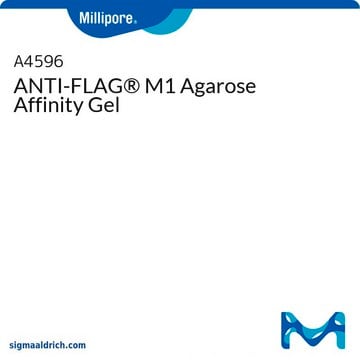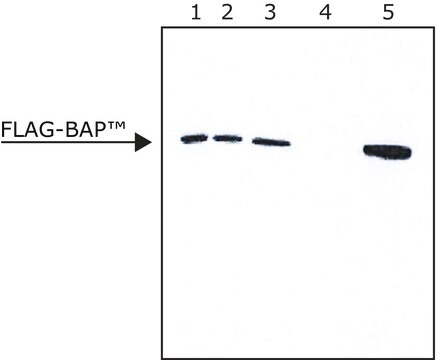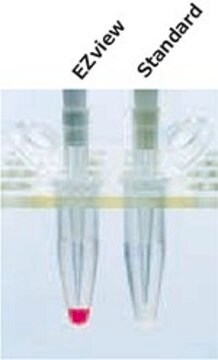F2426
ANTI-FLAG® M2 monoclonal antibody produced in mouse
clone M2
Sinónimos:
Anti-ddddk, Anti-dykddddk
About This Item
Productos recomendados
clone
M2, monoclonal
analyte chemical class(es)
proteins
technique(s)
affinity chromatography: suitable
immunoprecipitation (IP): suitable
matrix
4% agarose bead; 45-165μm bead size
isotype
IgG1
capacity
≥0.6 mg/mL, gel binding capacity
shipped in
wet ice
storage temp.
−20°C
¿Está buscando productos similares? Visita Guía de comparación de productos
General description
Specificity
Application
Elution - FLAG peptide, Glycine, pH 3.5, 3x FLAG peptide
Learn more product details in our FLAG® application portal.
Physical form
Legal Information
Disclaimer
Related product
Storage Class
10 - Combustible liquids
wgk_germany
WGK 3
flash_point_f
Not applicable
flash_point_c
Not applicable
Elija entre una de las versiones más recientes:
¿Ya tiene este producto?
Encuentre la documentación para los productos que ha comprado recientemente en la Biblioteca de documentos.
Los clientes también vieron
Contenido relacionado
Protein purification techniques, reagents, and protocols for purifying recombinant proteins using methods including, ion-exchange, size-exclusion, and protein affinity chromatography.
Protein expression technologies for expressing recombinant proteins in E. coli, insect, yeast, and mammalian expression systems for fundamental research and the support of therapeutics and vaccine production.
Nuestro equipo de científicos tiene experiencia en todas las áreas de investigación: Ciencias de la vida, Ciencia de los materiales, Síntesis química, Cromatografía, Analítica y muchas otras.
Póngase en contacto con el Servicio técnico














